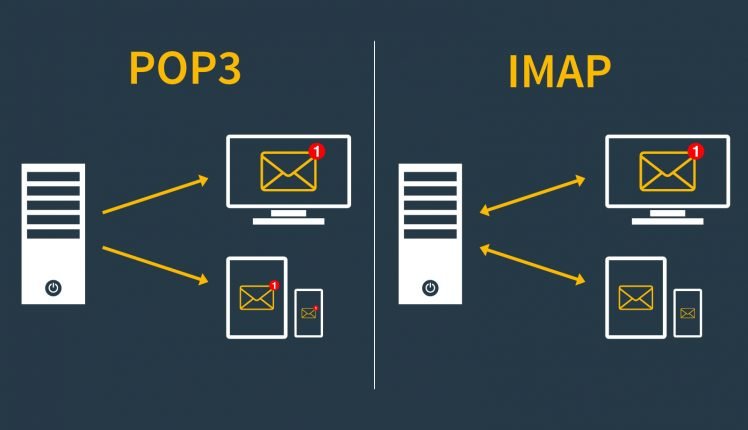
While there have been significant technological advancements made in the world of business and even daily life, emails have been constant. They play an integral role in growing and maintaining businesses.
Hence, choosing the right business email hosting platforms is crucial. As businesses grow, the need for better and more sophisticated business email solutions and tools grows as well. And that is where business email hosting in India comes in.
Moreover, with the growing number of online businesses, services like web hosting in India have also been increasing in demand.
The two most prevalent email protocols that businesses use are IMAP and POP3. This blog will talk about which one is better, and what are the differences that make it so!
What is IMAP?
Internet Message Access Protocol (IMAP) is an email protocol that allows users to operate and access emails on the receiver’s end. It essentially allows users to access and manage their emails on multiple devices at the same time.
What this means is that if the user deletes one of the received emails from their desktop, the email will be deleted from the mobile device and laptop linked to the same account as well.
It allows for seamless synchronisation of data across devices. This enables updated access for the users, regardless of which device they are using.
What is POP3?
POP3 stands for Post Office Protocol-Version 3! This email protocol allows users to access and operate their emails on multiple devices. However, POP3 functions for downloading emails on devices.
This means the protocol will download your emails on the devices you are using at the time and mark them for deletion on the server. In short, the emails are deleted from the server once the user downloads them onto a device.
This means that you can have access to your professional business email account through various devices but you won’t see the same emails because once deleted, they will only be stored and accessed on that device.
Difference Between IMAP and POP3
It is usually not about IMAP vs. POP3; it is about what the user prefers and finds comfortable. Here are a few differences that might help you find your preferred type of email protocol!
| Feature | IMAP | POP3 |
| Synchronisation | Allows seamless synchronisation when it comes to multiple devices and complete control of the actions. With different devices being updated on actions happening on one device, it can be a trusted protocol for many. Hence, preferred by many businesses. | Unlike IMAP, POP3 isn’t synchronised well between devices. The emails and messages are scattered across devices once deleted from the server – making synchronisation of data an issue. If a business wants to experience ease in data accessibility and control over its email accounts, IMAP over POP3 may be the better choice. |
| Storage | All the emails are stored on the server, and web when it comes to IMAP. A central server holds all of your emails so you can read and manage them from your account through any device. This feature of IMAP makes it suitable for businesses with huge teams and high email volumes. | POP3, on the other hand, does not store the emails on the server. Once the emails are downloaded onto a device, they are deleted from the server. So, we can say that POP3 is the email protocol that is suitable for businesses with limited storage and smaller teams. |
| Offline Access | IMAP does not offer offline access since the emails as stored on a central server rather than a device. | POP3 allows offline access since the emails are downloaded and stored on the devices themselves. |
Conclusion
Both IMAP and POP3 have unique attributes that offer benefits for businesses looking to host their own business email accounts. The decision of which one is better completely depends on your choice and is subjective!







